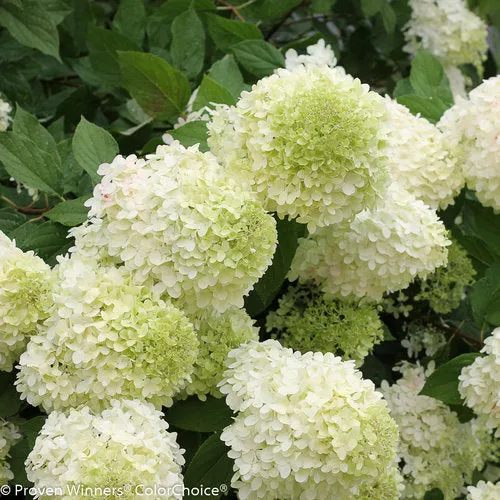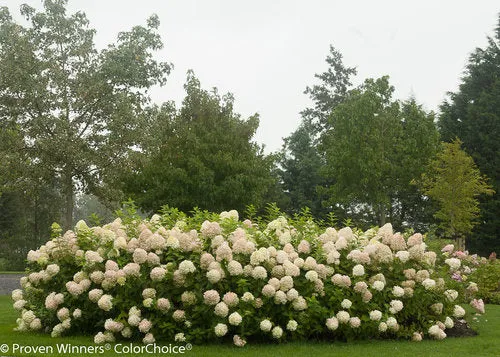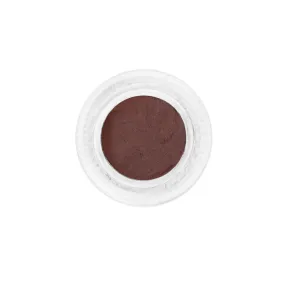The flower clusters of 'Limelight' are typically large and conical in shape, resembling a pyramid. When they first appear in mid-summer, the flowers have a creamy-green color, which gradually transitions to a pale lime green as they mature. Towards the end of the season, they may develop hints of pink or rose tones. The flowers remain on the shrub for an extended period, providing interest throughout the summer and well into fall. The leaves are dark green, ovate or elliptical in shape, and have serrated edges. They provide a lush backdrop to the vibrant blooms.
- Size: 'Limelight' hydrangea can reach a height of around 6 to 8 feet (1.8 to 2.4 meters) and have a similar spread. The size can vary based on growing conditions and pruning practices. It is considered a relatively large hydrangea shrub, and its size makes it an excellent focal point in the garden or a striking addition to mixed borders.
- Location: Plant the shrub in a spot that receives partial sun to full sun. Morning sun with afternoon shade is ideal, as too much direct sun can scorch the leaves and flowers.
- Soil: It prefers well-draining, fertile soil that is rich in organic matter. The soil pH should be slightly acidic to neutral (around 6.0 to 7.0).
- Watering: Keep the soil consistently moist but not waterlogged. Regular watering is essential, especially during hot and dry periods.
- Mulching: Apply a layer of organic mulch around the base of the plant to retain soil moisture and regulate temperature.
- Pruning: 'Limelight' hydrangeas bloom on new wood, so it's best to prune them in late winter or early spring before new growth begins. You can cut back the shrub to around one-third of its size to encourage vigorous new growth and a more compact shape.
- Fertilizing: Feed the plant with a balanced, slow-release fertilizer in spring to promote healthy growth and abundant blooms.
















